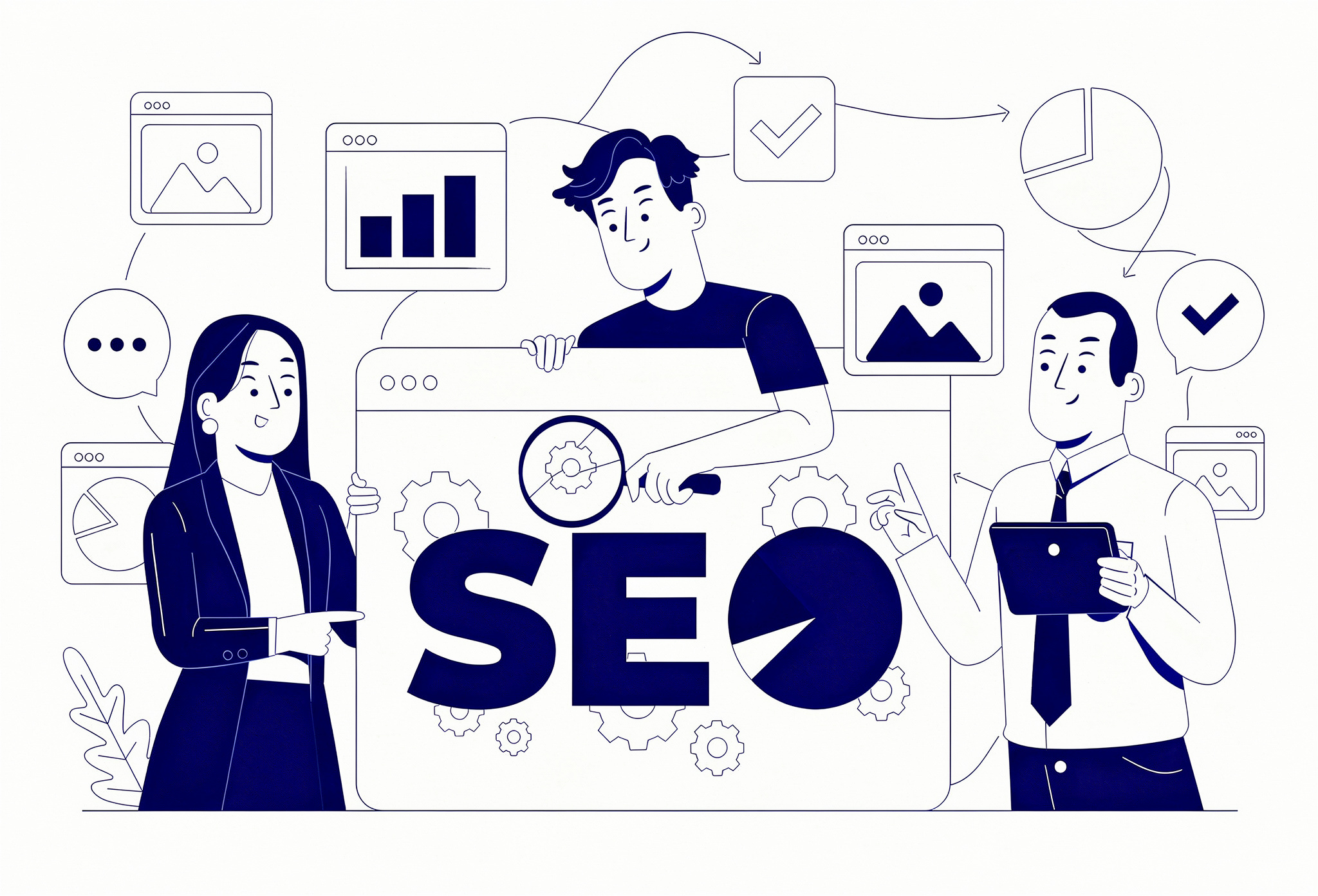The world is currently witnessing the exponential growth of the fast-growing technology— the internet. With around 1.83 billion websites and 4.7 billion users, the modern era is experiencing a tectonic shift in the way people spend their time. But more importantly, the internet has led the way for business owners to expand their operations from the traditional ‘brick and mortar way’ to the ‘online way.’
Though it may sound all rosy from the outside, most businesses (90% failure rate after 120 days) struggle to succeed after taking the online route. The primary reason is poor incoming traffic. It’s true, but the critical question is ‘Why is the traffic poor?’
The answer is quite apparent - poor website graphic design practices. Most people assume that website graphic design is all about aesthetics. They think that picking the right colours, fonts, and jaw-dropping animations will do the trick. But a good web design is much more than that. Several factors come into play when you plan web design. When you fail to consider these factors, you will end up draining all your effort, money, and time for nothing.
To avoid such a situation, we have come up with five critical guidelines that will help you develop a successful website thronged by millions:-
- Spend Enough Time on the UI/UX
Let’s begin with an interesting fact: Investing $1 in UX will guarantee a return of $100; that’s a whopping 9900% ROI. Website design is a curiosity creator; when people find your website interesting and think there is more to it, they will keep coming back again and again. To make people love your website, pay attention to the ‘User Interface’ and ‘User Experience’. For those who do not know the difference between the two, here is a simple definition for you to remember -
“UX is all about making your website useful while UI is all about making your website beautiful.”
If your visitors enjoy interacting with your website, half your work is done. While designing the UX, place yourself in the visitors’ shoes. What would you like to see when you visit the website? The answer will help you craft the perfect user experience to improve visitor’s perception of your brand. As far as UI is concerned, pay attention to the following -
- Colour: Use a maximum of five colours while you're designing a website.
- Typefaces: Try to avoid creativity when it comes to the typeface. Employ two-three different font sizes and colours which suit the design.
- Website Graphic Design: To convey the information clearly, use graphics wherever possible. After all, a picture speaks a thousand words.
- Seamless Navigation
Imagine yourself looking for a shoe in an e-commerce store. Even after 5 minutes of browsing, you couldn’t find the right product. How would you feel?
That’s precisely how your visitors would feel when they cannot reach their desired product or service while browsing your website. Whether you like it or not, visitors don't have much time today to spend searching for information on your website. They want the information to be served on a platter every time they come to your website. If not, their loyalty will shift to your competitors before you know. This is why you need to design the navigation of your website perfectly. Here are a few tips to the same:
- Employ a responsible but simple menu navigation.
- Don't confuse your reader with too many navigation options.
- Make the important menu options always visible
- Have a search bar at the top of the website.
- Add breadcrumbs to every page for them to navigate back and forth.
Here is an example of a website that is neat to look at and also has all the important navigation options available easily to the user -

- Consistency is the Key
Here is a question. Can you identify the below website in less than a second?

Yes, it is Amazon! Most people will get this right because they associate the white and navy blue tone with Amazon. The best part is the design is consistent across all the global websites of Amazon. So even if a visitor from the United Kingdom accesses the Indian Amazon website, he/she will know how to navigate the website. On top of it, they know right away that they are at a place they can trust. That’s the power of consistency.
Remember - Consistency is what helps your business evolve into a brand. Decide a template or theme right before you build your website. The idea is to have a consistent structure, background, typeface, colour, tonality and navigation options across all the webpages.
- Make Your Website Responsive
This is a no-brainer. With the number of smartphone usage growing exponentially, there is a high probability that visitors will be using a mobile to access your website. You may have the best website graphic design, but a non-responsive website is a real mood killer for any visitor. A broken navigation menu, inaccessible buttons, illegible text are some of the common features of a non-responsive website when viewed on different devices. A responsive website also means faster load time, an important criterion to improve the SEO of your website.
Let’s take a look at how Amazon’s website looks in a smartphone -

You can notice that all the necessary elements are still accessible in the smartphone even though the screen size has shrunk by at least one third. The key is to test every feature on every page on multiple devices and browsers while developing the website. Make it completely device-independent.
- Accessible to Everyone
The World Wide Web Consortium or W3C has declared certain standards and guidelines for web accessibility. Their main aim is to make websites that can be accessed by anyone and everyone, even if someone is visually impaired. Here are some pointers oon how you can make the website accessible to all -
- Use alt text for images. This helps the blind to hear the description of the image that is in front of them.
- Use a high contrast colour scheme. A sizable number (300 million) of the world population is colour blind and can’t differentiate between colours. So use contrasting colours for different action items such as buttons and hyperlinks.
- Keep your fonts large as a general rule. This is useful for partially blind and old age people who have difficulty in seeing small fonts.
- Allow keyboard shortcuts to navigate without the help of a mouse. This is again very handy for the blind, as they can move across the site with the help of arrow keys and few keystrokes. It is way better than following the mouse cursor across the screen.
Here is a website with a contrasting colour scheme and large typography as part of its design.

Closing Thoughts
A website is like a shop. When you exude a neat and clean design, you will attract visitors, and when you display a cluttered and clumsy design, you will get the opposite result. In short, it all boils down to usability and experience, which is entirely in your hand. Instead of stuffing your website with flashy elements and focusing on offering the best website graphic design, pay attention to user experience to build brand awareness.
Make your first impression powerful and impactful - Your visitors will remember you forever!








.webp)


